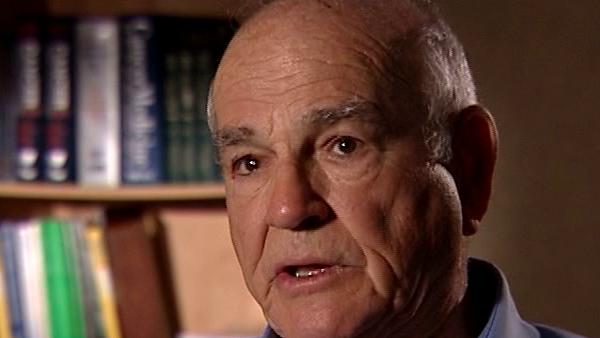NEXT STORY

Getting involved in astrobiology at NASA Ames Research Center
RELATED STORIES

NEXT STORY

Getting involved in astrobiology at NASA Ames Research Center
RELATED STORIES



Well, I got back and I… I got sort of restless, you know, I was… I was back in Philadelphia, I came back to Fox Chase, and I decided I'd never done much undergraduate teaching, so—I had taught graduate students at Penn pretty regularly and I had quite a few whom had their PhD in our lab there, and I taught the medical school when I went on rounds and all that, but I hadn't done any undergraduate teaching and I thought, okay, at my age it's probably a good thing to take a stab at that and I had… I knew Stanford quite well because for years we used to go there in the summer and… and work at the… the Center for Advanced Study and the Behavioral Sciences, which is a kind of behavioral sciences think tank. They usually had a few scientists there and I went there and would write, or… or very often spend a month making plans for future research. I… I would design, in detail, potential studies which, when it came back, you know, there'd be a big discussion, but very often it would initiate research. But I used to go there, so I knew that area quite well and it's a… a nice place to be in the… in the summer, or in the winter for that matter. So I taught in the program in human biology which had been established some years prior to that and… and, you know, interacting with the undergraduates was fun and I liked living in… I've always liked living in California. When… when I was, let me see, about 25 or so, I spent a summer at the… at the… in Berkley at the… before, you know, Berkley was still a quiet university town before all the festivities of the 1960s, but I got to know the… the geography well and I did a lot of climbing up in the Sierras and the Cascades and coast range and I… I hiked miles and miles then.
American research physician Baruch Blumberg (1925-2011) was co-recipient of the Nobel Prize in Physiology or Medicine in 1976 along with D Carleton Gajdusek for their work on the origins and spread of infectious viral diseases that led to the discovery of the hepatitis B virus. Blumberg’s work covered many areas including clinical research, epidemiology, virology, genetics and anthropology.
Title: Teaching undergraduates at Stanford
Listeners: Rebecca Blanchard
Dr Rebecca Blanchard is Director of Clinical Pharmacology at Merck & Co., Inc. in Upper Gwynedd, Pennsylvania. Her education includes a BSc in Pharmacy from Albany College of Pharmacy and a PhD in Pharmaceutical Chemistry from the University of Utah in Salt Lake City. While at Utah, she studied in the laboratories of Dr Raymond Galinsky and Dr Michael Franklin with an emphasis on drug metabolism pathways. After receiving her PhD, Dr Blanchard completed postdoctoral studies with Dr Richard Weinshilboum at the Mayo Clinic with a focus on human pharmacogenetics. While at Mayo, she cloned the human sulfotransferase gene SULT1A1 and identified and functionally characterized common genetic polymorphisms in the SULT1A1 gene. From 1998 to 2004 Dr Blanchard was an Assistant Professor at Fox Chase Cancer Center in Philadelphia. In 2005 she joined the Clinical Pharmacology Department at Merck & Co., Inc. where her work today continues in the early and late development of several novel drugs. At Merck, she has contributed as Clinical Pharmacology Representative on CGRP, Renin, Losartan, Lurasidone and TRPV1 programs and serves as chair of the TRPV1 development team. Dr Blanchard is also Co-chair of the Neurology Pharmacogenomics Working Group at Merck. Nationally, she has served the American Society of Clinical Pharmacology and Therapeutics on the Strategic Task Force and the Board of Directors. Dr Blanchard has also served on NIH study sections, and several Foundation Scientific Advisory Boards.
Tags: Stanford, Berkely, California
Duration: 2 minutes, 11 seconds
Date story recorded: September 2007
Date story went live: 28 September 2009